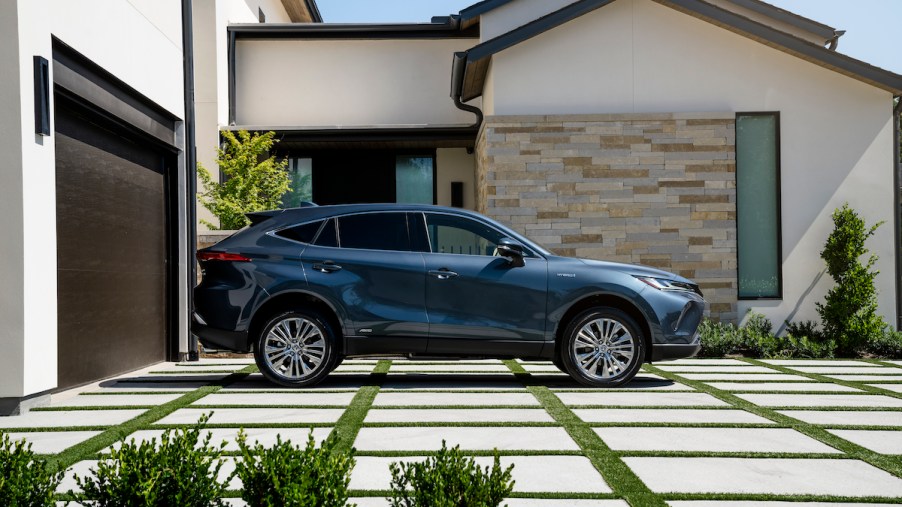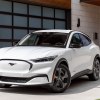
Did Toyota Finally Learn Its Lesson With the Venza?
Over the years, Toyota has produced a number of popular and reliable vehicles: the Corolla, the Camry, the RAV4, and the Highlander, among others. Unfortunately, the first-generation Venza was not in this stellar line. This midsize crossover SUV debuted in 2009 and discontinued in the 2015 model year.
This year, Toyota has brought back the Venza for the 2021 model year. Did Toyota get it right this time? Brian Normile of Cars.com reveals why he thinks that the Toyota Venza might be just better on the second try.
The Toyota Venza makes a comeback
When Toyota introduced the Venza the first time, it was based on a Camry platform. Although it’s technically classified as a two-row crossover SUV, some people considered it to be the successor to the Camry station wagon of the 1990s. Toyota considered it to be neither an SUV nor a wagon but instead presented it as having more space and versatility than a sedan but smaller than the three-row Highlander. Oddly, the carmaker targeted buyers who were considering the Honda Accord and the Nissan Altima.
Toyota’s vague marketing didn’t help sell the Venza. In its first year on the market, Toyota sold more than 54,000. By the time this SUV discontinued in 2015, it only sold about 21,000 Venzas. Not surprisingly, the first-generation Toyota Venza lost ground against the much-loved Accord and had no real toehold in the SUV market.
The 2021 Toyota Venza is still a two-row Camry-based crossover SUV. But Toyota has taken a different tack this time. For one thing, it’s a hybrid and AWD only. No other powertrain or drivetrain options are available in the U.S. It looks like an SUV this time around—and an upscale one at that.
Echoing Lexus’ luxury
At first glance, the Toyota Venza mirrors exterior styling cues used by the Lexus RX. Its sloping front end and gracefully slanted headlights to its sleek roofline all hint at traces of Toyota’s premium brand. Size-wise, the Venza is smaller than the RX and somewhat larger than the Lexus NX.
The sense of upmarket quality continues inside the Venza’s cabin, especially in the upper trim levels, the XLE and the Limited. Normile notes nice touches such as wood accents and leatherlike upholstery. Headroom and legroom front and rear suits even larger adults.
There’s a surprising special option that is available only in the Limited that Normile tested: the Star Gaze roof. With the press of a button, this electrochromic glass panel changes from transparent to translucent. Toyota has not said whether the Star Gaze roof is cheaper to repair than the traditional moonroof.
Normile found a few small flaws in the Venza’s interior design. The touch-sensitive climate and audio controls provide only audible feedback, and their icons are hard to see depending on lighting conditions. Another problem was the crowding together of the electric parking brake switch, the drive mode selector, and the cubby located behind it, making it a challenge to use the cubby’s USB ports.
The Venza’s infotainment touchscreen proved to be disappointing. A 12.3-inch display comes standard on the Limited but is optional on the XLE. Much of the display’s space is dedicated to only one function, making for less than optimal use of the screen. All other versions of the Venza are equipped with an 8.0-inch touchscreen, Amazon Alexa, Apple CarPlay, and Android Auto connectivity.
Cargo space in the Venza is generous, at just over 36 cubic feet with the rear seats up and slightly more than 70 cubic feet with them down. But this area lacks goodies such as cargo nets or organizational systems that buyers want in two-row SUVs.
What is the new Venza like to drive?
Any buyer who had hoped to get a Camry wagon powered by a lively Camry V6 in the Toyota Venza will quickly be dispelled of that notion thanks to its hybrid set-up. And while it is a 2.5-liter gas engine like the standard Camry, it also has two electric motor-generators that push the front wheels. A third electric motor powers the rear wheels.
The Venza makes 219 hp and 163 lb-ft of torque, with up to 80% of the latter that can be applied to the rear wheels. Compared to a rival like the 280-hp Honda Passport, it might not seem like much horsepower for a midsize SUV. But Normile says that the Venza has plenty of highway acceleration where it’s needed. Fuel economy is also satisfactory, with EPA estimates running at 39 mpg.
The SUV’s continuously variable automatic transmission has proven to be a bit springy during acceleration. Normile states that this behavior becomes more apparent when shifting into Eco or Sport mode. Similarly, while the brakes are fully functional, they feel a bit mushy due to the hybrid’s regenerative braking. Steering and ride quality are decent, even with the Venza’s efficiency-based tires.
Two tech features worth noting are Toyota’s predictive efficient drive system and its Safety Sense 2.0 suite. The former employs the Venza’s integrated navigation system to learn traffic conditions and routes to decrease energy use. The Safety Sense 2.0 suite includes such standard advanced safety features as forward-collision warning, adaptive cruise control, land-departure warning with lane-keeping assist, and automatic emergency braking with pedestrian detection.
For buyers considering a midsize hybrid SUV, the comfortable and efficient 2021 Toyota Venza is worth a look. It starts at $33,645 for the LE trim, while the Limited maxes out at $43,525.


